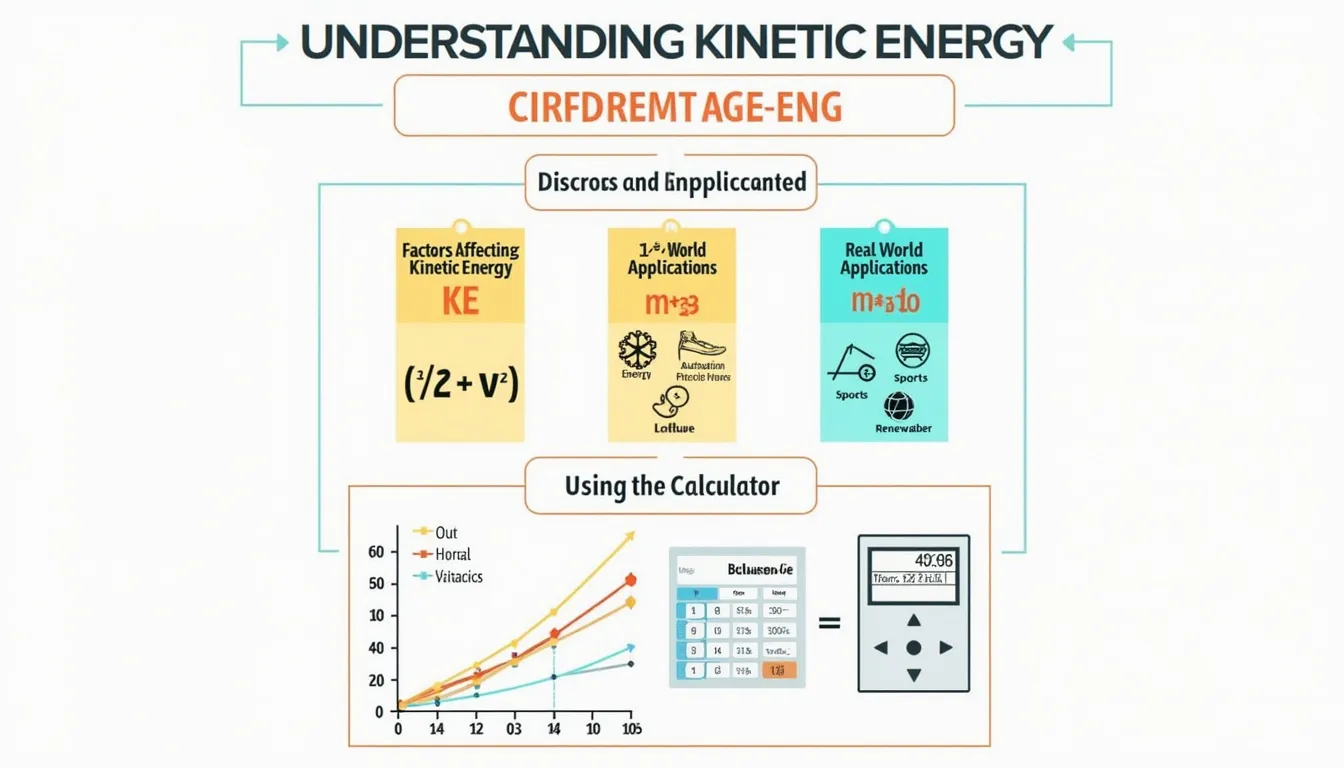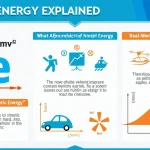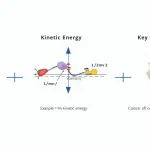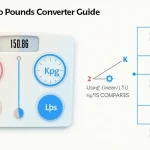Kinetic Energy Calculator
Is this tool helpful?
How to use the tool
- Enter the mass. Example 1: 7 kg Example 2: 1500 g
- Select the mass unit. Choose kilograms, grams or pounds; the calculator converts everything internally to kg.
- Enter the velocity. Example 1: 3 m/s Example 2: 55 km/h
- Select the velocity unit. Pick m/s, km/h or mph; the tool converts to m/s automatically.
- Press “Calculate”. Results appear in J, kJ and cal.
Formula used
The script applies
$$KE = 0.5 \, m \, v^2$$
- m — mass in kilograms
- v — velocity in metres per second
Example calculations
A. Lightweight cart
- m = 7 kg v = 3 m/s
$$KE = 0.5 \times 7 \times 3^2 = 31.5\;{\rm J}$$ 31.5 J = 0.03 kJ = 7.53 cal
B. Small parcel
- m = 1500 g (→ 1.5 kg)
- v = 55 km/h (→ 15.28 m/s)
$$KE = 0.5 \times 1.5 \times 15.28^2 \approx 175.1\;{\rm J}$$ 175.1 J = 0.18 kJ = 41.9 cal
Quick-Facts
- 1 J = 1 N·m, the SI derived unit for energy (SI Brochure, 2022).
- 1 calorie = 4.184 J (NIST CODATA, 2018).
- Standard gravity is 9.80665 m/s²—useful when comparing potential and kinetic energy (BIPM, 2019).
- Escape velocity from Earth is 11.2 km/s, yielding 63 MJ per kg (NASA, 2021).
FAQ
What is kinetic energy?
Kinetic energy is the work needed to accelerate an object from rest to its current speed, expressed in joules (ISO 80000-1, 2009).
Why does velocity affect kinetic energy more than mass?
Velocity is squared in the equation, so doubling speed multiplies energy by four, whereas doubling mass only doubles energy (HyperPhysics, 2023).
Which unit conversions does the calculator handle?
It converts grams ↔ kilograms ↔ pounds and m/s ↔ km/h ↔ mph using exact factors from NIST tables (NIST, 2019).
Can kinetic energy be negative?
No. Squaring velocity makes the product non-negative; the minimum value is zero when the object is at rest (Serway & Jewett, 2020).
Is the classical formula valid at relativistic speeds?
Above 10 % of light speed, use $$KE = (\gamma-1)mc^2$$ to include relativistic effects (Einstein, 1905).
How much kinetic energy does a 145 g baseball at 40 m/s carry?
$$KE = 0.5 \times 0.145 \times 40^2 = 116\;{\rm J}$$—about the energy of dropping 12 kg one metre (Frohlich, 2016).
How do I convert joules to calories manually?
Divide joules by 4.184. Example: 100 J ÷ 4.184 = 23.9 cal (NIST CODATA, 2018).
Does the tool store my inputs?
All computations run client-side; no data leaves your browser (MDN Web Docs, 2023).
Important Disclaimer
The calculations, results, and content provided by our tools are not guaranteed to be accurate, complete, or reliable. Users are responsible for verifying and interpreting the results. Our content and tools may contain errors, biases, or inconsistencies. Do not enter personal data, sensitive information, or personally identifiable information in our web forms or tools. Such data entry violates our terms of service and may result in unauthorized disclosure to third parties. We reserve the right to save inputs and outputs from our tools for the purposes of error debugging, bias identification, and performance improvement. External companies providing AI models used in our tools may also save and process data in accordance with their own policies. By using our tools, you consent to this data collection and processing. We reserve the right to limit the usage of our tools based on current usability factors.







